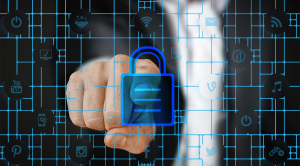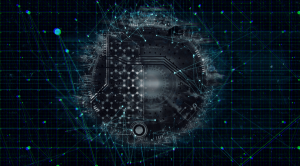The true cost of cyberattacks in 2024
Cyber attacks are becoming more common and more complex, threatening the safety of businesses, organizations and individuals. In 2023, cyberattacks, from data breaches to hijacking of enemy account information, caused an estimated $8 trillion in losses globally. It is expected that this year, this number will increase to 9.5 trillion USD, according to information from Cybersecurity Ventures. Advances in artificial intelligence could push these costs even higher, with forecasts suggesting an 11% increase to $10.5 trillion by 2025.
A new Statista survey of industry leaders has revealed that cyberattacks are one of the biggest risks to businesses, right behind business disruption and economic growth. shared. According to the survey, which spanned from 2018 to 2023, 34% of respondents said that cyber incidents were their top priority.
The evolving landscape of cyber attacks
Data breaches are one of the most common forms of cyberattack and have a significant impact on both businesses and individuals. According to IBM's report, these incidents had reached a record high the previous year. The average cost of a data breach globally has increased 15.3% since 2020, reaching $4.45 million.
The situation in the US is especially serious. In 2023, the US recorded the highest average cost for data breaches, up to 9.5 million USD.
December 2023 was especially difficult for consumers in the United States, with 443 security incidents publicly disclosed. More than 1.6 billion records containing information about customers and individuals were compromised. Major breaches include Real Estate Asset Network, with more than 1.5 billion records affected; Comcast Cable Communications (Xfinity), affecting nearly 36 million people; Delta Dental of California with 7 million affected customers; and Integris Health, causing the personal information of approximately 4.7 million individuals to be leaked.
Globally, the Middle East region remains one of the places most affected by data breaches, with average costs reaching $8.07 million, an increase of 8.2% compared to 2022. In contrast, Canada and Germany recorded a decrease in average costs, with Canada seeing a 9% decrease to $5.13 million and Germany a 3.7% decrease to $4.67 million. Japan also recorded a slight decrease. This decrease can be explained by the imposition of new laws and regulations from governments to more effectively limit cyber attacks.
While data breaches play an important role in the cyber threat landscape, the scope of cyber attacks does not stop there. Modern cybercriminals and hackers are leveraging the power of advanced technologies such as Artificial Intelligence and machine learning to carry out more sophisticated and elusive attacks.
Escalation of ransomware
Ransomware, a form of malware created to disable access to a computer system until a sum of money is paid, has undergone a significant evolution over its 30-year history—and no there are signs of stopping. In 2023, the number of ransomware attacks increased by 55% compared to the previous year, with 4,368 reported cases.
But what has led to this dramatic increase in ransomware attacks? There are a number of key factors that have contributed to this, and below are some points to consider.
Mastering the mind: The art of social engineering
Social engineering attacks, such as phishing, continue to spread and become more sophisticated, taking advantage of human psychology rather than vulnerabilities in systems. These attacks often involve deceiving individuals into revealing sensitive information or granting access to restricted systems. The human factor is often the weakest point in cybersecurity.
The shift to remote and flexible working has increased these risks. Cybercriminals exploit vulnerabilities in home networks and corporate remote access systems without adequate security. Personal devices used for work purposes also increase the risk of security breaches. For example, a simple phishing email sent to a personal device can lead to unauthorized access to an entire company network.
Smart devices and the Internet of Things (IoT) continue to expand the field of combat. While convenient, they often lack robust security capabilities, increasing the risk of attacks, threatening both personal privacy and corporate security. For example, a compromised smart home device could open the door for an attacker to access personal and sensitive work-related information.
Weak link: -How supply chain attacks undermine business security
In 2024, the cybersecurity landscape will increasingly be shaped by the threat of supply chain attacks, which are growing in sophistication and scale. Supply chain attackers often target and exploit the most vulnerable points in the supply chain.
Often vendors or third parties have less stringent security measures than their targets. Once a weakness is compromised, attackers will use it as a starting point to move into larger, more secure systems. This could include inserting malicious code into software updates or using stolen credentials to break into secure networks.
MOVEit, a file transfer management software used for secure data transfers, became the target of a supply chain attack in 2023. The software was used by 1,700 software companies and 3.5 million Developers in sectors such as healthcare, finance, technology and government use.
Deepfake and the emergence of AI cybersecurity threats
On the way to 2024, a crucial US election year, the rise of artificial intelligence threats, especially deep threats, is emerging as a worrying security issue. hesitate. The parliamentary elections in Slovakia in September 2023 are a clear example of how deepfake technology can harm the electoral process.
Leading up to this election, the far-right party Republika used fake audio and video notes to spread false information about the leader of the Slovak Progressive Party, Michal Šimečka. These fake works changed Šimečka's tone, falsely portraying him as discussing plans to rig the election and even raising beer prices. While the specific impact of these deepfakes on the final election results remains unclear, the case highlights the considerable power of this technology.
Attesting to this threat, Google Cloud's Cybersecurity Forecast for 2024 indicates that synthetic AI could complicate phishing email detection and potentially enhance the scale and effectiveness of criminal activity. The accessibility and constant advancement of AI technology makes it a formidable tool for attackers.
What is being done to combat cyber attacks?
There is a notable increase in investment in cybersecurity to deal with the growing cyber threat. For example, DigitalOcean reported that 37% of companies in the US are planning to increase spending on cybersecurity. This increase is driven by the deployment of advanced security software, modernization of legacy systems and the emergence of new threats from innovative artificial intelligence.
However, the responsibility for combating cyber threats does not lie solely with corporations. Government regulations and policies are also shaping comprehensive national cybersecurity strategies. This includes developing strong cyber defenses, promoting public-private intelligence sharing partnerships, and investing in cybersecurity infrastructure.
Additionally, leaders can support education and training programs to build a highly skilled cybersecurity workforce and introduce legislation that enforces strict cybersecurity standards. A notable example of international cooperation is the joint initiative of Australia, Germany, Canada, the Netherlands, New Zealand, the UK and the US to guide software development companies and engineers in creating industrial products. Technology is safer. Such partnerships are essential because cyber threats frequently cross borders, requiring coordinated global efforts to prevent and respond effectively.
What you can do to protect yourself from cyber attacks
Responsibility for cybersecurity does not lie solely in the hands of companies and national leaders; it also depends on the individual. Everyone has a role to play in preventing cyberattacks, which requires a comprehensive approach that includes technical measures, awareness, and adherence to strong security policies. As individuals, we have the power to significantly strengthen our cyber defenses through several key actions:
1. Apply strong authentication protocols
Creating strong passwords is an important first line of defense against cyber attacks. Most security experts recommend using a password manager to securely generate and store long, complex passwords, whether it's on your work or personal account. .
Implementing strong authentication measures, like two-factor authentication (2FA) or multi-factor authentication (MFA), is a great way to add extra layers of security to any of your accounts . This ensures that even if credentials are compromised, unauthorized access is prevented.
2. Consider using a VPN
While downloading a VPN is not a perfect defense against common attacks like phishing, it plays an important role in enhancing your digital security in many ways. way. VPNs provide encryption and secure connections, especially on networks of questionable reliability, like public Wi-Fi at coffee shops, hotels, or airports. This helps protect your connection from Man-in-the-Middle attacks and DDoS attacks.
Thanks to post-quantum encryption algorithms, VPNs are especially effective at protecting your data from interception threats such as “store now and decrypt later” attacks. This provides immediate and future protection for your online data. We recommend choosing a comprehensive solution like RICE VPN, which often includes tools like password managers, helps implement strong authentication standards, and keeps your passwords safer.
3. Update all your software regularly
Software updates and patches are designed to fix known vulnerabilities in operating systems, applications, and other software components. Cybercriminals often take advantage of vulnerabilities in outdated software to gain unauthorized access or deploy malicious code. Organizations can significantly reduce their risk of exploitation by keeping up to date with software patches.
4. Vigilance can protect you
It's important to stay vigilant and keep yourself updated on the latest scam tactics to avoid becoming a victim. Many scams are designed to collect personal information such as names, addresses and Social Security numbers through phishing emails and malware. Therefore, being familiar with the signs of these scams is important to protect yourself from falling victim to them.
Some signs that you may be a target of phishing include receiving text messages or emails from people you don't know, with unknown links, misspellings, and grammatical errors.
Companies also need to ensure employees are trained to recognize phishing and social engineering techniques.
5. Report any suspicious online activity
Although reporting suspicious activities may seem like a small part, its impact is not insignificant. According to a report by IBM, it took organizations an average of 204 days to identify a data breach, then an additional 73 days to contain it. By warning early about suspicious activities, individuals can contribute greatly to companies detecting and responding to breaches more quickly. This not only helps minimize the duration of the breach but can also limit the extent of damage.










